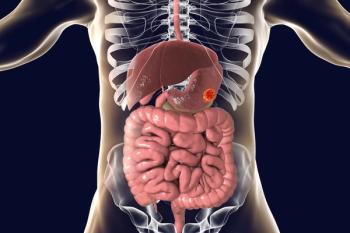
Oncology NEWS International
- Oncology NEWS International Vol 11 No 10
- Volume 11
- Issue 10
Bone Mineral Deficits Seen After Childhood Allogeneic BMT
NIAGARA-ON-THE-LAKE, On-tario, Canada-With the increasing success in the treatment of childhood leukemia and other cancers, possible long-term problems need to be addressed, said Sue Kaste, DO, St. Jude Children’s Research Hospital.
NIAGARA-ON-THE-LAKE, On-tario, CanadaWith the increasing success in the treatment of childhood leukemia and other cancers, possible long-term problems need to be addressed, said Sue Kaste, DO, St. Jude Children’s Research Hospital.
"One particularly worrisome sequela is the decrease in bone density that we see in this population," she said at the 7th International Conference for Long-Term Complications of Treatment of Children and Adolescents for Cancer, hosted by Roswell Park Cancer Institute (abstract 3). "It appears that at a time when children should be building their bones, bone mineral deficits may occur in this survivor population. Physicians must be mindful of this risk when following these patients."
Patients who return for annual evaluation in the Bone Marrow Transplantation Clinic at St. Jude undergo quantitative computed tomography (QCT) and dual-energy x-ray absorptiometry (DEXA). Dr. Kaste reviewed the results of these tests obtained from March 2001 to November 2001.
Of 59 patients who visited the clinic during the study months, 29 were male and 30 were female. Their average age at bone marrow transplantation (BMT) was 10.9 years (range, 1.6 to 20.4). Their median age at the time of study was 15.9 years (range, 4.4 to 27.2).
The participants received a bone mineral density (BMD) z-score of their lumbar spine for each test. The median BMD score from QCT was -.89 (range, -4.06 to 3.05); for DEXA, it was -1.1 (range, -3.9 to 3.6). Any BMD z-score below -2 standard deviations was considered indicative of osteoporosis.
Study Results
By QCT, 12 patients showed evidence of osteoporosis, and based on the DEXA scan, 7 patients were afflicted. Females were more severely affected than males (P = .0137).
Additionally, of 64 patients who underwent MRI of the hips and knees, 15 showed evidence of osteonecrosis in the hip region, and 18 showed evidence of osteonecrosis in the knees.
"We know that osteonecrosis of the hips occurs in a percentage of children after bone marrow transplantation. However, our study shows that the knees are also affected to a greater degree than we expected," Dr. Kaste said.
Females had a significantly increased risk of osteonecrosis, compared with males (P = .032; odds ratio 3.4). However, age at transplant, primary diagnosis, and race were not significant factors, she said.
One quarter of the patients studied had findings of both bone mineral decrements and osteonecrosis.
"This preliminary evidence suggests that allogeneic bone marrow transplant survivors should be screened for bone mineral density regardless of whether or not they complain of any symptoms of osteoporosis or osteonecrosis," Dr. Kaste said.
Weight-Bearing Exercise
Patients treated at St. Jude are encouraged to participate in weight-bearing exercise to increase bone density, she said, but with possible concurrent hip and knee problems, this can be difficult. "As practitioners, we must help our patients make the best choices to maintain their bone health," she said.
Dr. Kaste said that future studies will focus on identifying signs of decreasing bone mineral density and osteonecrosis at earlier stages when intervention is most effective and elucidating why female childhood cancer survivors are at greater risk for these complications.
Articles in this issue
about 23 years ago
FDG-PET Predicts Prognosis in Primary Osteosarcomaabout 23 years ago
Vaccine Turns Immune System Against Cancer Cellsabout 23 years ago
Three Themes to Guide von Eschenbach at NCIabout 23 years ago
Arimidex Approved for Early-Stage Breast Cancer in Postmenopausal Ptsabout 23 years ago
Long-Term Exposure to Diesel Exhaust Poses Lung Cancer Riskabout 23 years ago
Most Americans Unaware of Excessive Weight as a Risk for Some Cancersabout 23 years ago
Three Themes to Guide von Eschenbach as NCI Directorabout 23 years ago
Gleevec Gets FDA Priority Review for First-Line Use in Early CMLabout 23 years ago
New Anti-HIV Agent Prevents Virus From Entering Cellabout 23 years ago
Docetaxel/Gemcitabine Effective in Advanced NSCLCNewsletter
Stay up to date on recent advances in the multidisciplinary approach to cancer.

















































































